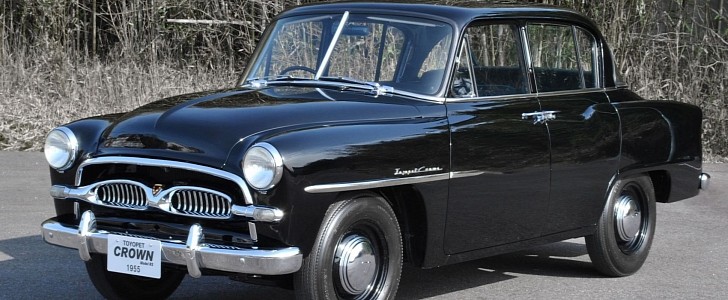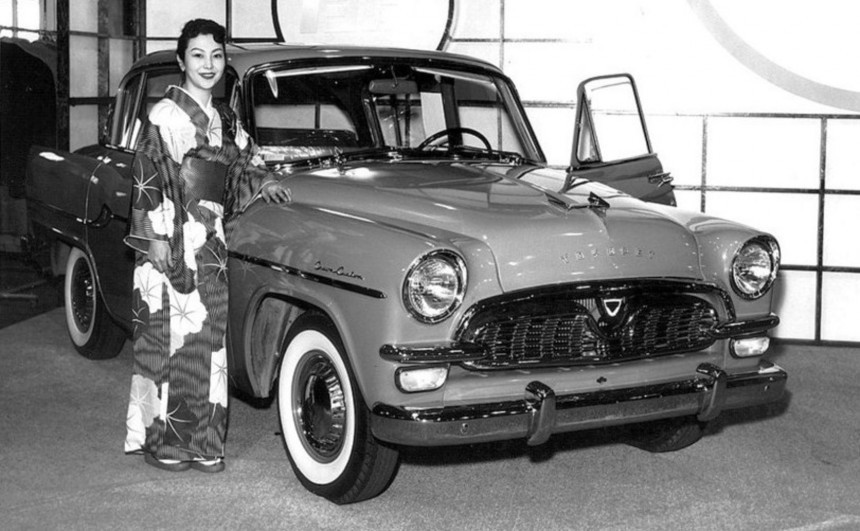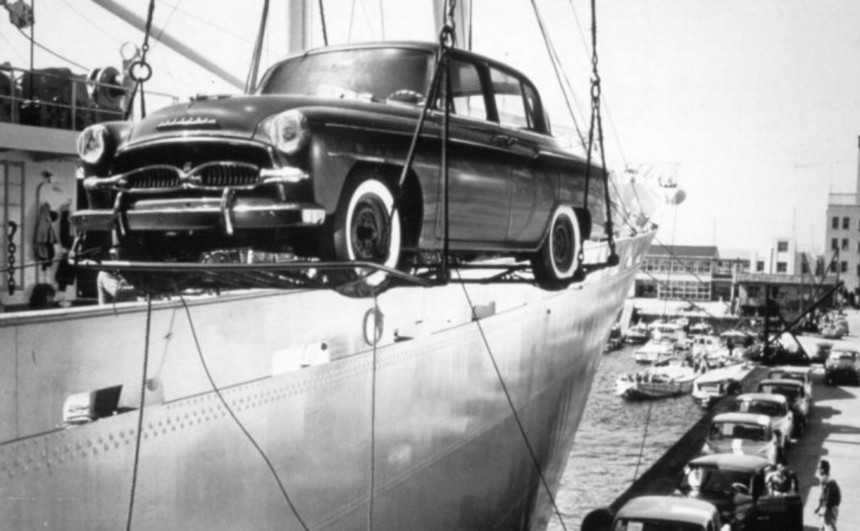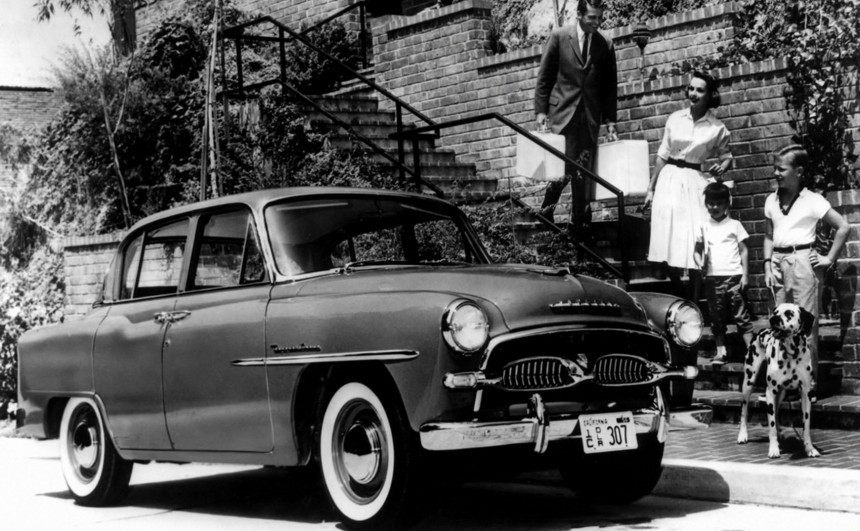Back in the late fifties, two little Crowns came to Tinseltown pursuing the American dream. Although the model never rose to stardom, it paved the way for today’s Camrys, Corollas, or Avalons and helped transform Toyota into a global brand.
Today, the Japanese carmaker is one of the biggest player in the automotive industry, and this achievement would not have been possible without the company’s success in the United States.
It all started in the early fifties when Toyota executives began exploring an expansion of the passenger car business outside Japan. They set their sights on Europe and the U.S. markets, but the latter’s immense potential was far more appealing.
The company’s preliminary research revealed that many returning members of the U.S. Army were moving to the suburbs and starting families, creating a demand for smaller, second cars.
Toyota continued to pay close attention in the following years, discovering that compact cars sales were almost doubling year after year. European manufacturers built the vast majority of those, which indicated that Americans were embracing foreign cars, so the market potential became unquestionable.
In 1955, the company began production of the new Crown, the successor to the low-volume, VW Beetle-inspired Toyopet SA. Built specifically for the Japanese market, it would become the first Japanese car to be exported to the United States.
The car looked much like the Simca Vedette that had debuted a year earlier in France, but it had rear "suicide" doors, a feature previously used on the AA, Toyota’s first car. Like its predecessor, the small four-door sedan was powered by the reliable 60-hp, 1.5-liter inline-four R engine.
It employed a suspension system that utilized independent double wishbones and coil springs in the front and triple semi-oval leaf springs at the rear. Since Japan’s road network was in bad shape at the time, the Crown’s system made it extremely popular and Toyota executives hoped this popularity would translate to the U.S. market.
On August 25, 1958, two left-hand-drive Toyopet Crowns arrived on American shores, docking in California. General Electric-sourced sealed beam headlights and other safety features were fitted to the cars after their arrival to comply with local laws.
Two months later, on October 31, 1957, Toyota Motor Sales (TMS) was established in a former Rambler/Ford dealership at 6000 Hollywood Blvd in Los Angeles. The location was chosen because the city had airline access to Tokyo and because of its proximity to the Port of Los Angeles.
Newly appointed TMS ales administrator James McGraw stated that the Crown was “underpowered, overpriced and it won’t sell.” Unfortunately, he was right; the car was purposely built for Japan’s rough road network but struggled on America’s smooth, free-flowing roads. It took an eternity to reach 60 mph (96 kph), and when it did, it shook so badly that drivers found it almost impossible to see out the rear-view mirror.
Moreover, the Toyopet moniker used by Toyota since 1947 as a result of a naming contest for the SA could not be taken seriously in the U.S. since it contained the nouns ‘toy’ and ‘pet’. Coupled with its small size, many Americans jokingly called it a Japanese motorized stroller.
After receiving a California retail license and forming a small distribution network, TMS officially launched the Crown through five Toyota dealerships in July 1958. It was priced at $1,999, about $500 more than the Volkswagen Beetle Deluxe Sedan, which it was supposed to compete against.
By the end of the year, Toyota managed to sell 287 Crowns, and in 1959, sales more than tripled to 967 units. For 1960, Toyota added a wagon body style and a larger 79-hp 3R engine, but sales fell to 659 units.
The sales continued to drop, and since TMA accumulated $1.42 million in losses, Toyota decided to stop all Crown exports to the U.S., focusing its efforts on the rugged Land Cruiser instead.
Although it wasn’t as popular as anticipated in the U.S., the Toyopet Crown paved the way for many highly successful sedans like the Corona, Camry, Corolla, or Avalon.
The Crown never returned to the American market, but it carries on in Japan, where it is extremely popular. Now in its 14th generation, it holds the title for the longest-running Toyota passenger-car nameplate.
It all started in the early fifties when Toyota executives began exploring an expansion of the passenger car business outside Japan. They set their sights on Europe and the U.S. markets, but the latter’s immense potential was far more appealing.
The company’s preliminary research revealed that many returning members of the U.S. Army were moving to the suburbs and starting families, creating a demand for smaller, second cars.
Toyota continued to pay close attention in the following years, discovering that compact cars sales were almost doubling year after year. European manufacturers built the vast majority of those, which indicated that Americans were embracing foreign cars, so the market potential became unquestionable.
The car looked much like the Simca Vedette that had debuted a year earlier in France, but it had rear "suicide" doors, a feature previously used on the AA, Toyota’s first car. Like its predecessor, the small four-door sedan was powered by the reliable 60-hp, 1.5-liter inline-four R engine.
It employed a suspension system that utilized independent double wishbones and coil springs in the front and triple semi-oval leaf springs at the rear. Since Japan’s road network was in bad shape at the time, the Crown’s system made it extremely popular and Toyota executives hoped this popularity would translate to the U.S. market.
On August 25, 1958, two left-hand-drive Toyopet Crowns arrived on American shores, docking in California. General Electric-sourced sealed beam headlights and other safety features were fitted to the cars after their arrival to comply with local laws.
Newly appointed TMS ales administrator James McGraw stated that the Crown was “underpowered, overpriced and it won’t sell.” Unfortunately, he was right; the car was purposely built for Japan’s rough road network but struggled on America’s smooth, free-flowing roads. It took an eternity to reach 60 mph (96 kph), and when it did, it shook so badly that drivers found it almost impossible to see out the rear-view mirror.
Moreover, the Toyopet moniker used by Toyota since 1947 as a result of a naming contest for the SA could not be taken seriously in the U.S. since it contained the nouns ‘toy’ and ‘pet’. Coupled with its small size, many Americans jokingly called it a Japanese motorized stroller.
By the end of the year, Toyota managed to sell 287 Crowns, and in 1959, sales more than tripled to 967 units. For 1960, Toyota added a wagon body style and a larger 79-hp 3R engine, but sales fell to 659 units.
The sales continued to drop, and since TMA accumulated $1.42 million in losses, Toyota decided to stop all Crown exports to the U.S., focusing its efforts on the rugged Land Cruiser instead.
Although it wasn’t as popular as anticipated in the U.S., the Toyopet Crown paved the way for many highly successful sedans like the Corona, Camry, Corolla, or Avalon.
The Crown never returned to the American market, but it carries on in Japan, where it is extremely popular. Now in its 14th generation, it holds the title for the longest-running Toyota passenger-car nameplate.












